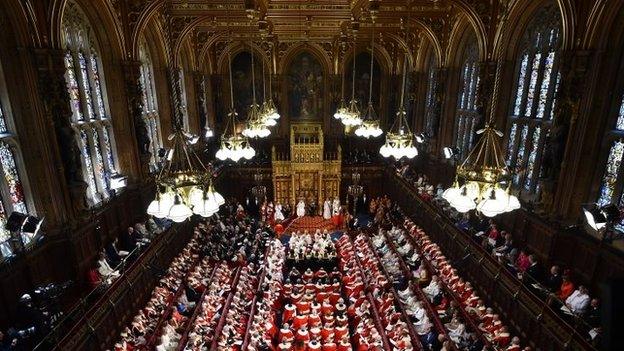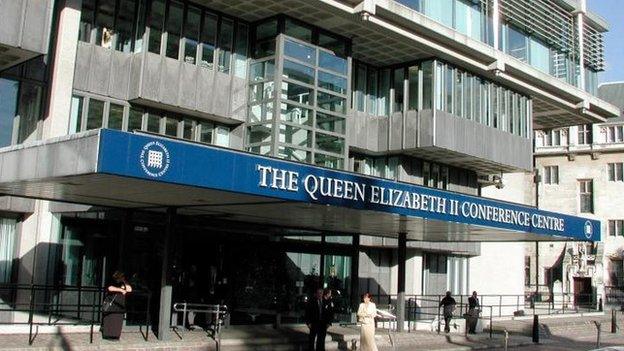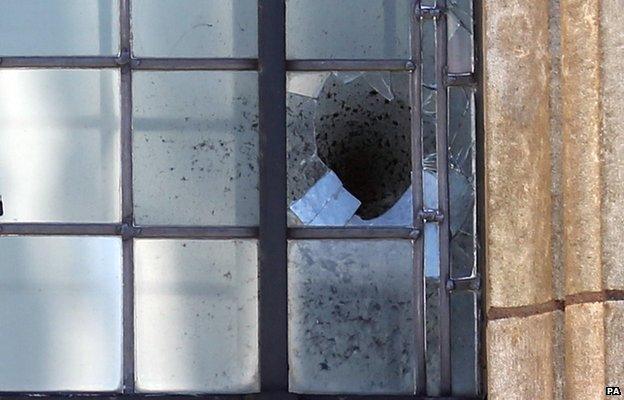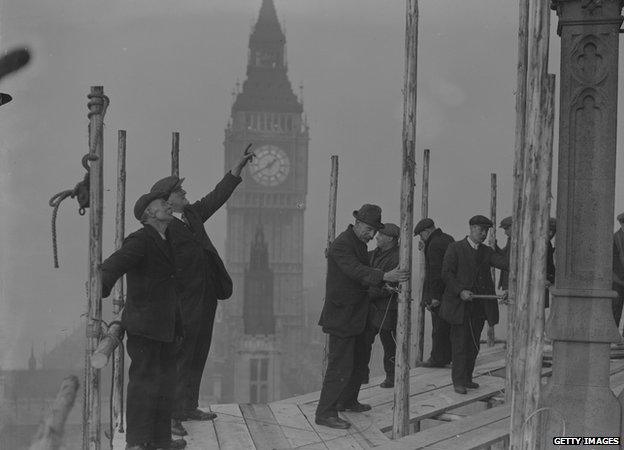Restoration comedy
- Published

Picture the scene. It's May 2020 and the new House of Commons assembles for the State Opening of Parliament.
It could be a rather piquant occasion, as the newcomers blink at the hallowed green benches, and reflect that they may never sit on them again.
For within a week or two the Victorian core of the Palace of Westminster, the home of Parliament is declared closed for repairs, and MPs and Peers have to move out and sit in makeshift debating chambers in the nearby QEII Conference Centre…. With the prospect that a fickle electorate might dispense with their services before the repair work is done.
Today a weighty consultants' report was published, outlining the options for renovating the Palace, with a stark warning that more make-do and mend was no longer a viable option.
The key issue is the mechanical and electrical systems in the bowels of the building. The wiring and pipe work lurking in the two kilometres of underground passages is already well beyond its design life, and the current rate of replacement is so slow that something serious is bound to go wrong before the work is complete.
The ancient wiring might cause a fire, or the venerable pipes might burst and flood the passageways, causing the wiring to go phut!
'Spiritual home'
And either might be enough to make the building inoperable for a considerable period. Then there's the point that if there was a major fire, the state of the building, and the existence of uncharted voids and gaps in the fire precautions, might make it impossible to contain.
A key issue will be avoiding an expensive, er, restoration comedy.

Could this be Parliament's new home?
The work cannot sensibly be carried out with honourable members and noble lords still in situ. It would cost a lot more (a lot more) and take a lot longer.
If the whole building was emptied, restoration and renewal would take about six years and cost an estimated £3.5-3.9 bn (depending on how much improvement was included in the repair scheme). Keep the parliamentarians in their beloved building and the timescale goes up to around 32 years, and the cost leaps up by around £2bn, to £5.7bn.
There are, of course possible compromises between those two options. And my bet is that the MPs and peers will opt for the idea of closing down and renovating one half of the building, and then the other.
So, for example, peers could shift to a temporary chamber on the Parliamentary estate (inside Westminster Hall, perhaps, or even in the vast atrium of Portcullis House) while MPs stay in their current chamber for a while, then move over to a newly revamped Lords Chamber.
That might add a bit to the cost and take 11 years to complete, but it would keep the MPs in their spiritual home…. sort of.
Non-starter
There is a genuine revulsion among the traditionalists, at the idea of forsaking the chamber where Churchill and Thatcher orated. Others compare that, with curled lips, to the stiff rear-guard action the traditionalists fought against the money-saving abolition of the practice of printing leather-bound compilation volumes of Hansard.

Parliament is falling apart at the seams
On another front there are those who argue that Parliament should use the opportunity to re-locate out of London for a while.
Ian Austin MP has suggested Dudley Town Hall as an alternative venue. The small detail is that this would involve relocating 650 MPs, nearly a thousand peers, two thousand House staff and getting on for as many MPs' staff to the chosen site.
And then there's the fact that in our system ministers vote and answer questions in Parliament - and there are all sorts of complications involved in shuttling them between Whitehall and Dudley.
Given the already mind-boggling expense of the exercise, I think relocation's probably a non-starter - especially when the huge office complex outside the old Victorian heart of the parliamentary estate will be unaffected by the restoration project, allowing most MPs and most staff to stay where they are.
What happens next?
Olympic-style delivery
In the next couple of weeks a joint committee of MPs and Peers will be convened, probably under the chairmanship of the Leader of the Commons, Chris Grayling, to refine the options and possibly commission further work.
Then, at some point in 2016, both houses will be invited to vote on their proposals. And the day to day decision making may well be given over to an Olympics-style delivery authority.
The fun part is wondering what would happen if they didn't agree; it might not be as simple as the Lords wanting to stay and the Commons wanting to move out.
They might disagree on some crucial detail or set conditions, or whatever.

Restoration workers restore the Central Tower of the House of Commons, 1929
But no-one who's seen the governance of Parliament in action would bet against some kind of blip.
And that's before we enter the tricky territory of trying to imagine what a Parliament building for the 21st century might be like.
The consultants' report contained some limited speculation about roofing over some internal courtyards and improving the rather mediocre access for disabled people- but there's scope for a much more ambitious rethink if the parliamentarians are willing to exercise their imaginations …..